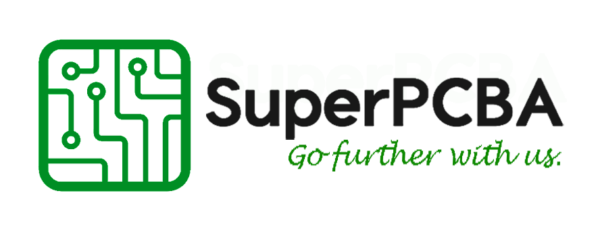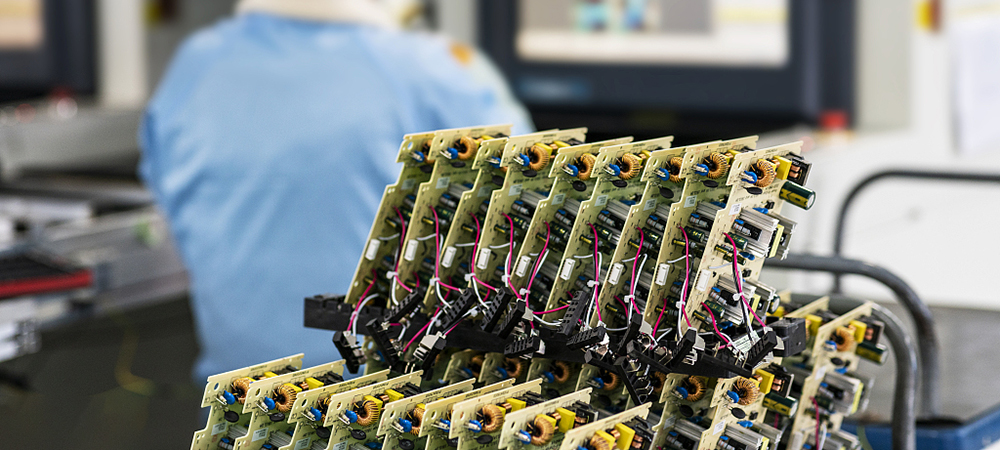Welcome, electronic enthusiasts! Today, let’s dive into the world of circuit boards. Yes, those magical boards that make our electronic devices “smart.”
Get ready, because we’re going to explore various fundamental materials of circuit boards. Don’t worry about it getting too complex or dull; I’ve broken down the key points into simple chunks. Whether you’re a beginner or a circuit wizard, insights about FR-4, metals, flexible, ceramic, and high-frequency substrates will prove highly beneficial.
FR-4
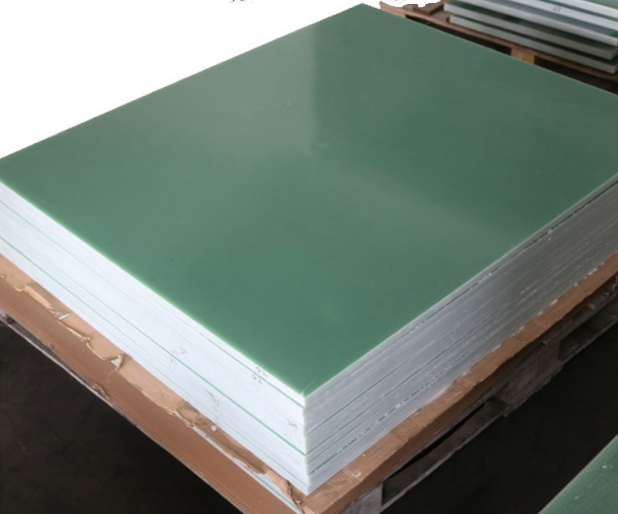
Definition: FR-4 is a composite material primarily composed of woven glass fabric (or paper) and epoxy resin. These materials are stacked to form a robust insulating substrate.
Characteristics:
- Mechanical Strength: FR-4 substrates exhibit excellent mechanical strength, making them highly favored in the manufacturing of circuit boards.
- Insulation Performance: Glass fiber provides strong insulation, helping prevent short circuits in circuits.
- Heat Resistance: FR-4 material can operate at relatively high temperatures, typically withstanding temperatures ranging from approximately 130°C to 140°C.
- Flame Retardancy: FR-4 possesses high flame retardancy, resisting the spread of flames, a factor reflected in its name, “Flame Retardant.”
Advantages:
- Widespread Availability: FR-4 is one of the most common substrate materials, making it easily accessible and relatively cost-effective.
- Versatility: Suitable for most general electronic applications, including consumer electronics, communication devices, and industrial controls.
- Good Processability: FR-4 is easy to cut, drill, and solder, making it an ideal choice in circuit board manufacturing.
Disadvantages:
- Relatively Brittle: Despite its high mechanical strength, FR-4 is relatively brittle, making it less suitable for applications requiring high flexibility or bending.
Applications:
- Consumer Electronics: Such as computer motherboards, smartphones, televisions, etc.
- Communication Devices: Used in the manufacturing of routers, switches, and other electronic equipment.
- Industrial Control Systems: Widely applied in factory automation and control systems.
In summary, FR-4 is a commonly used substrate material that performs exceptionally well in various applications, especially in general electronic manufacturing.
Metal Substrate
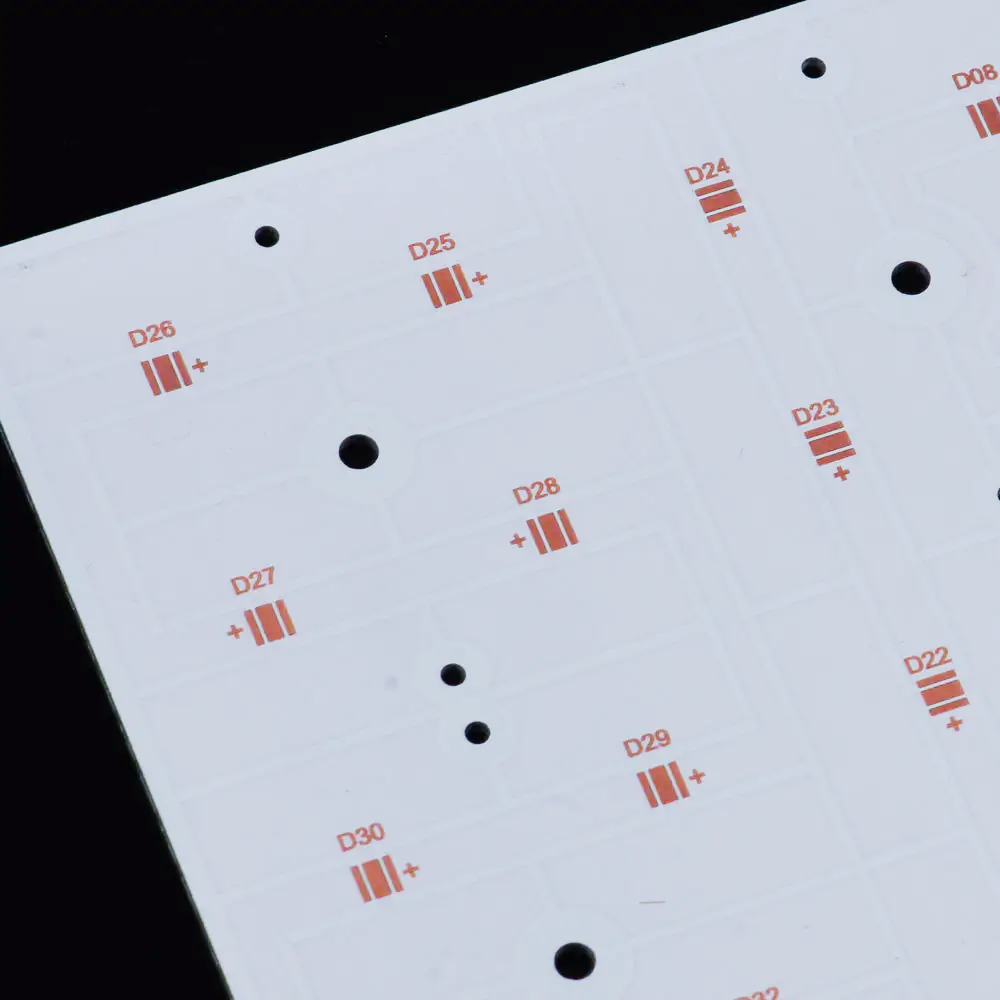
Definition: A metal substrate is a special type of substrate typically formed by coating a layer of metal (usually aluminum or copper) on an insulating material.
Characteristics:
- Heat Dissipation: Metal substrates exhibit excellent heat dissipation, effectively conducting and dissipating heat.
- Conductivity: The surface coating of metal substrates provides outstanding conductivity, facilitating the connection of electronic components.
- Stability: Metal substrates demonstrate high stability in the face of temperature variations and environmental challenges.
Advantages:
- Heat Dissipation: Suitable for high-power applications, efficiently dissipating generated heat.
- Conductivity: Metal substrates offer good electrical conductivity, contributing to robust connections between electronic components.
- Stability: Relatively high stability in temperature variations and environmental conditions.
Disadvantages:
- Cost: Manufacturing metal substrates tends to be more expensive compared to other substrate materials.
- Weight: Metal substrates are relatively heavy, which might not be suitable for applications with high lightweight requirements.
Applications:
- LED Lighting: Metal substrates are commonly used in LED lighting modules to enhance heat dissipation.
- Power Amplifiers: Suitable for high-power electronic devices like audio power amplifiers.
- High-Power Electronic Devices: Used in the manufacturing of high-power electronic devices requiring efficient heat dissipation.
In summary, metal substrates excel in applications demanding superior heat dissipation and conductivity. However, their relatively high cost makes them suitable for specific high-power and high-demand scenarios.
Flexible Substrate

Definition: A flexible substrate is a circuit board made from flexible insulating materials, typically utilizing materials like polyester film (e.g., PET) or polyimide (PI).
Characteristics:
- Flexibility: Flexible substrates exhibit extremely high flexibility, allowing bending and folding for applications requiring such deformations.
- Lightweight: Compared to rigid substrates, flexible substrates are lighter, making them suitable for lightweight designs.
- Thin: Flexible substrates are very thin, making them suitable for applications with limited space.
Advantages:
- Bendability: Suited for designs requiring bending or folding, such as wearable devices and flexible displays.
- Lightweight and Thin: Being lightweight and thin aids in designing more compact and portable devices.
- Space Adaptability: Suitable for designs with strict space requirements, as seen in small electronic devices.
Disadvantages:
- Cost: The manufacturing cost of flexible substrates is relatively high.
- Heat Dissipation: Due to the thin design of flexible substrates, their heat dissipation performance is relatively poorer.
- Manufacturing Complexity: Manufacturing flexible circuit boards is relatively complex, requiring advanced manufacturing techniques.
Applications:
- Wearable Devices: Flexible substrates are commonly used in wearable technology, such as smart wristbands and smart clothing.
- Flexible Displays: Applicable to the manufacturing of curved displays and bendable screens.
- Medical Devices: Flexible circuit boards can be utilized in medical sensors and devices, adapting to the curves of biological forms.
In conclusion, flexible substrates offer unique advantages in applications that demand flexibility and lightweight design. However, their relatively higher manufacturing cost might limit widespread adoption in certain large-scale applications.
High-Frequency Substrate
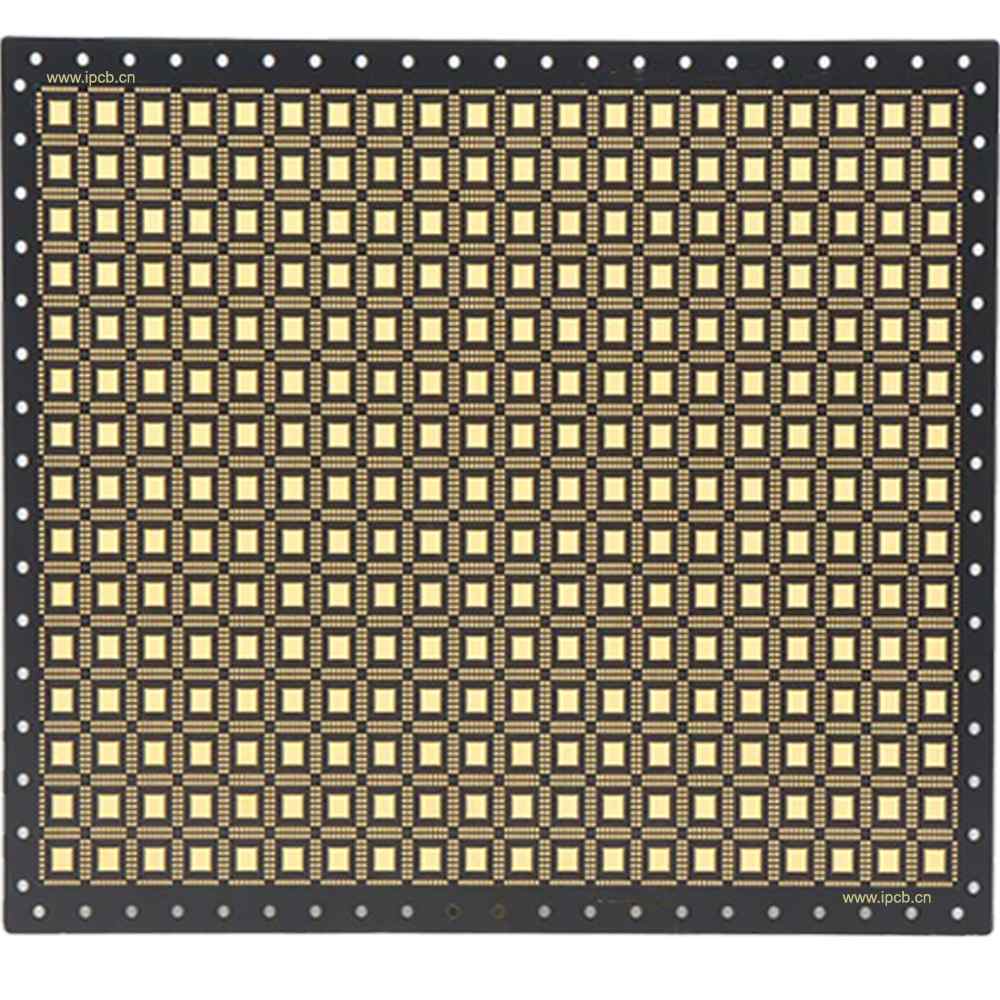
Definition: High-frequency substrates typically employ materials with low loss and high dielectric constants, such as PTFE (Polytetrafluoroethylene).
Characteristics:
- Low Loss: High-frequency substrates exhibit low loss characteristics, suitable for applications requiring the transmission of high-frequency signals.
- High Dielectric Constant: Possessing a relatively high dielectric constant contributes to improving signal transmission speed.
- Excellent Signal Integrity: High-frequency substrates provide excellent signal integrity, helping to reduce signal distortion.
Advantages:
- High-Frequency Transmission: Applicable to designs and manufacturing processes requiring the transmission of high-frequency signals, as seen in RF (Radio Frequency) and microwave applications.
- Signal Integrity: For high-frequency signals, high-frequency substrates aid in maintaining signal integrity, minimizing signal distortion.
- Low Loss: Having low loss characteristics reduces the loss of signal energy.
Disadvantages:
- Manufacturing Complexity: Due to the high demands on the manufacturing process, producing high-frequency substrates is relatively complex.
- Cost: The manufacturing cost of high-frequency substrates is typically higher.
Applications:
- RF Circuits: Used in the design and manufacturing of circuits that handle RF signals, such as antennas and communication devices.
- Microwave Applications: Applicable to applications in the microwave frequency range, including radar systems and microwave communication.
- High-Speed Digital Design: In designs requiring the transmission of high-speed digital signals, high-frequency substrates help maintain signal integrity.
In summary, high-frequency substrates play a crucial role in designs dealing with high-frequency signals and demanding signal integrity. However, their complex manufacturing processes and relatively higher costs make them more prevalent in specific fields.
Ceramic Substrate
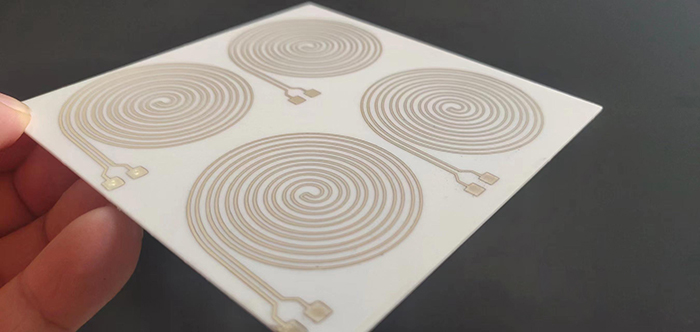
Definition: A ceramic substrate is a type of circuit board made from ceramic materials, designed to support and connect electronic components. Ceramic substrates are typically constructed using ceramic materials such as alumina (Alumina) or aluminum nitride (AlN). These substrates exhibit excellent insulation, high-temperature stability, and hardness, making them suitable for electronic devices operating in high-performance and high-temperature environments.
Characteristics:
- Excellent Insulation: Ceramic substrates possess outstanding insulation properties, effectively preventing the flow of electric current.
- High-Temperature Stability: They exhibit good stability at high temperatures, suitable for applications in elevated-temperature environments.
- High Hardness: Ceramic substrates typically have high hardness, providing good mechanical strength.
Advantages:
- High-Temperature Performance: Suitable for high-temperature environments, maintaining stability under elevated temperatures.
- Dimensional Stability: Ceramic substrates exhibit good dimensional stability with temperature variations.
- Good Insulation: Ceramic, being an excellent insulating material, effectively isolates circuits.
Disadvantages:
- Brittleness: Ceramic substrates are relatively brittle and prone to breakage.
- Processing Difficulty: Due to their high hardness, processing and manufacturing ceramic substrates can be challenging.
Applications:
- High-Temperature Environments: Owing to their high-temperature stability, ceramic substrates are commonly used in electronic devices operating in elevated-temperature environments.
- Radio Frequency (RF) Applications: Widely applied in RF circuits where excellent insulation and high-frequency performance are required.
- Power Electronics: Utilized in power electronic devices such as power amplifiers and switch-mode power supplies.
- Sensors: Ceramic substrates find applications in certain sensor applications, particularly those requiring high-temperature stability and insulation.
Overall, ceramic substrates exhibit unique advantages in specific applications due to their high-temperature performance and insulation properties.
Conclusion
Alright, after delving into numerous definitions, characteristics, and pros and cons, you might be feeling a bit fatigued and overwhelmed. So, take a look at the table below for a simpler and clearer overview.
| Substrate | Definition | Advantages | Disadvantages | Applications |
| FR-4 | Composite material with glass fiber cloth and epoxy resin | – High mechanical strength – Good insulation | -Relatively brittle – Not suitable for bending | Consumer electronics, communication devices, industrial control, etc. |
| Metal Substrate | Substrate formed by coating with a layer of metal | – Excellent heat dissipation – Good conductivity | – High manufacturing cost – Relatively heavy | LED lighting, power amplifiers, high-power electronic devices, etc. |
| Flexible Substrate | Made of flexible insulating materials like polyester film or polyimide | – Extremely high flexibility – Lightweight | – High manufacturing cost – Relatively poor heat dissipation | Wearable devices, flexible displays, medical devices, etc. |
| High-Frequency Substrate | Typically uses low-loss, high dielectric constant materials like PTFE | – Low loss – Excellent signal integrity | – Complex manufacturing process – High manufacturing cost | RF circuits, microwave designs, high-speed digital designs, etc. |
| Ceramic Substrate | Based on ceramic materials, often alumina or aluminum nitride | -Excellent insulation – High-temperature stability | – Relatively high brittleness – Complex manufacturing | High-temperature electronics, RF circuits, power electronics, etc. |
Ok!~ Having explored these fantastic substrate materials, does the world of circuit boards seem a bit less mysterious now? From FR-4 to metal, from flexible to ceramic, these boards may not speak, but they certainly have their own stories.
I hope this brief article has shed a little light on your electronic curiosity. Don’t be afraid to venture into new materials, just like we’ve delved into these circuit boards together. Remember, the world of electronics is full of surprises and creativity. Until next time, electronic enthusiasts!
